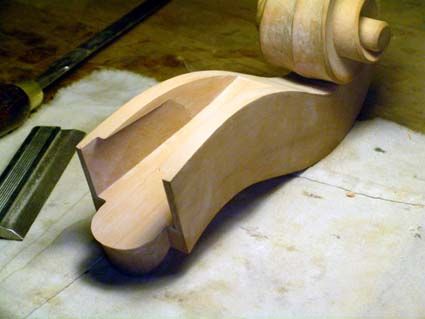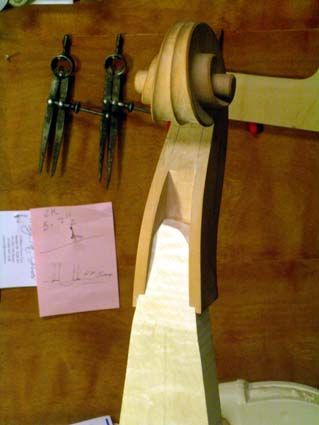While making a copy of Yehudi Menuhin’s Guarneri Del Gesu violin, my assistant and I have also been making a cello. It’s inspired by the ‘Castlebarco’ 1699 Stradivari cello at the Library of Congress and the ‘Servais’ 1701 Stradivari cello at the Smithsonian. Both are in Washington D.C., which I visited a few years ago.
Our cello back and sides are in poplar wood like a number of Stradivari’s cellos. And the scroll is carved from pearwood, which is a good solid hardwood for the pegs to fit into. Both poplar and pearwood are plain in appearance and match well together.
To have a beautifully figured maple neck, which I personally prefer, I grafted the plain pearwood scroll onto a maple neck- in the same style as the Stradivari cellos.
The method of grafting is a technique I heard at a meeting of the American Federation of Violin & Bow Makers. Later a detailed article was written by violin restorer Jörg Andreas Franke in Volume 2 of Tom Wilder’s book, “The Conservation, Restoration, and Repair of Stringed Instruments and Their Bows”
The traditional method cuts wood from the front of the peg box to accept the new neck graft. With good varnish retouching this can be made completely invisible- but as the decades pass the joint often begins to appear as an ugly joint line.
The new technique removes nothing away from the front of the peg box and the new neck graft is hidden within the walls of the pegbox and covered beneath the top nut. It will make varnishing around the scroll much easier on our cello. This method would also be useful when fitting the first neck graft to an old instrument, to save as much original wood and varnish as possible.
On right: the maple neck graft is glued into the pearwood scroll. Next the pegbox will be carved out and the scroll finished.

